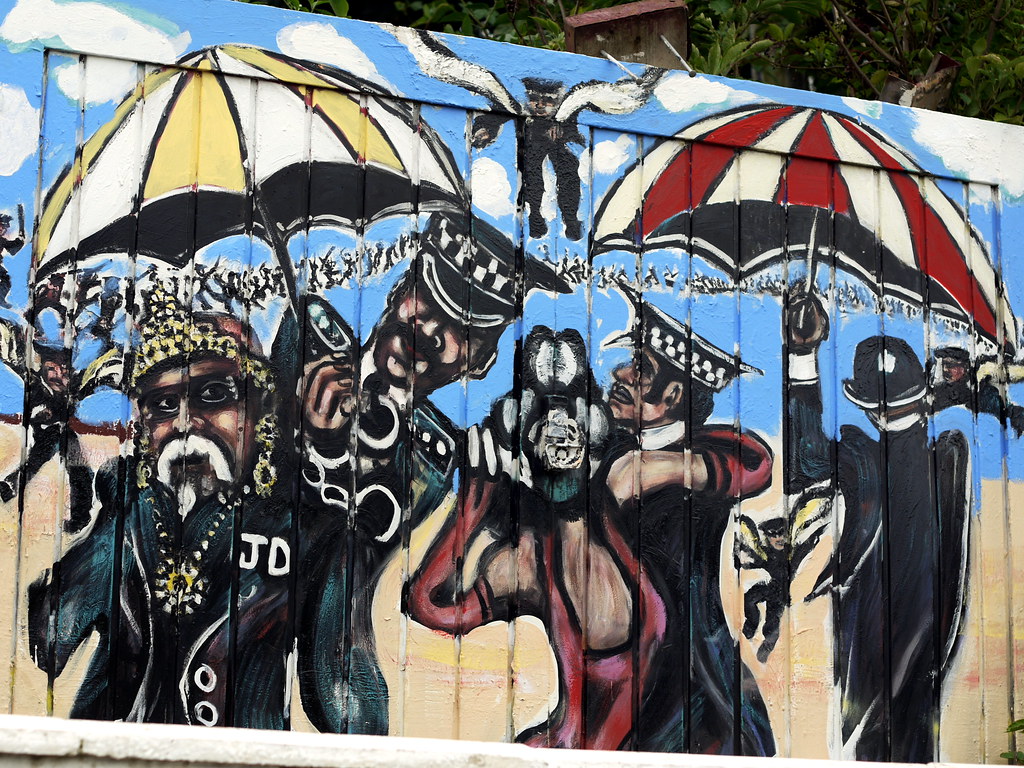Review: Outsider Art (World of Art), Colin Rhodes, Thames and Hudson
Champagne makers describe their wine as brut because the word has a meaning that encompasses what English speakers would term both rawness and the unadulterated. In this latter sense, the wine is pure, natural.
You can see why Jean Dubuffet (who was once a wine merchant) chose the word brut to describe both what is now termed outsider art and the movement he founded, Art Brut. For Dubuffet, the art of children, non-Western peoples or the mentally ill might be untutored but it might also be unfiltered and intuitive. For the Surrealists, this was highly prized, influenced as they were by Rousseau’s (sometimes dubious) ideas about nature over culture. Culture was about conformity and corruption, nature about innocence and purity.
The Surrealists saw true artists as outsiders, so they considered themselves in the ranks of outsiders. Modern art was criticised by some as looking like the art of the insane, so Surrealists took this as a badge of honour, and prized automatic drawing and writing, visionary images and uncanny juxtapositions.
Colin Rhodes suggests, in his updated edition of Outsider Art, that the ‘discovery’ of outsider art immediately prompted questions over classifications, bringing with it a set of problems. Classifying non-Western art – African tribal art or Oceanic art, say – as outsider art brings a danger of viewing it through a colonialist lens, as a curiosity and primitive. A focus on non-Western art’s aesthetic values may mean missing how it is embedded in local Indigenous culture, a living culture.
Classifying the art of the mentally ill may likewise be problematic, if it reinforces the idea that mental illness is something that occurs ‘outside’ normal society, and if it suggests that people can be classified as ‘ill’ or ‘well’ rather than being more complicated than that. In the case of a Surrealist-like elevation of the art of the mentally ill it can mean wrongly assuming that mental illness provides the artist with special powers. At the same time, we can also acknowledge that for those with mental illness, art can be an important therapeutic tool.
There is a problem with classifying folk art as outsider art too. Where outsider art is often individually distinctive and mystical, folk art is communal, traditional and often aims for literal depictions, even if these can be executed naively. In the case of quilt-making, featured in the book, this may simply be another example of art by women being marginalised.
Because the mainstream, Western art world, long influenced by modernism and postmodernism, is always looking for art that is new and unseen, outsider art is attractive, as Jerry Saltz points out in his recent book of art essays. But as that art becomes better known it becomes highly sought-after. One purist perspective on outsider art is that, besides it being non-commercial, if it is easily understood and popular, it no-longer is outsider art. It becomes closer to the Sunday painter tradition. Additionally, because postmodernism is so eclectic, outsider art may be difficult to distinguish from that of a professional artist within the art world.
All these extensive complications aside, Rhodes’ book shows an extraordinarily diverse, rich, dizzying collection, in terms of vision, execution and media. Naivety and a lack of development of craft may seem to be components of outsider art, but much Indigenous art contradicts such a stereotype, and there are other examples in Rhodes’ book of exquisite, delicate and comprehensive renderings, like the cityscapes of Willem van Genk, the beautiful colour pencil abstracted landscapes of Joseph Yoakum, and the decorative, Byzantine, wildly busy art of Adolf Wolfli.
Works are often executed using found materials or common media. Ballpoint pens feature prominently. A key outsider work, now in the Smithsonian Institute, is James Hampton’s The Throne of the Third Heaven, a work now justly famous but found in Hampton’s garage after he died. Hampton’s dazzling piece utilises common household furniture, used lightbulbs and cardboard rolls, all covered in gold and silver foil. Like the American Howard Finster, Hampton was driven by an idiosyncratic, apocalyptic vision, his art subjugated to his desire to praise God, even if it was only intended to be seen by himself.
Theorists point to an otherworldly, metaphysical aspect of outsider art, and, for the artist, its all-inclusiveness. Often outsider art is essential to the artist’s elaborate worldview that is unexplainable or inaccessible to others. This is why, for many artists, their art is not for public view or purchase. On the other hand, the art may be integral to evangelism or prophecy, as in the art of Howard Finster, which is heavily overlaid with, or indeed consists of, didactic, religious text. Artists with similar views are driven to expose significant spiritual truths normally hidden from view. And in our increasingly secular society, having a strong spiritual vision at the core of one’s identity may attract the label of ‘outsider’ anyway.
Nick Mattiske blogs on books at coburgreviewofbooks.wordpress.com and is the illustrator of Thoughts That Feel So Big.














